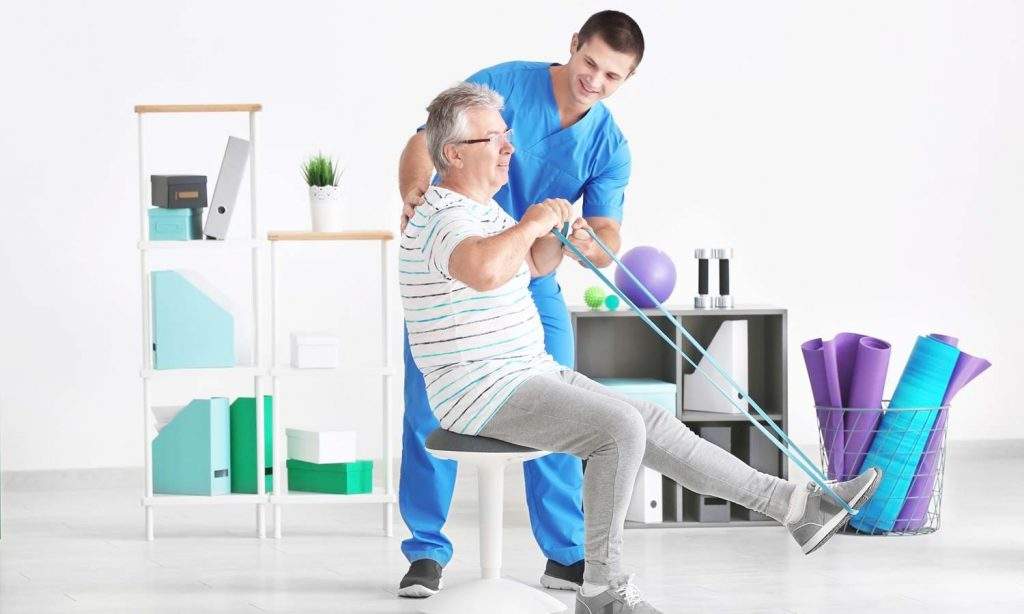
Top 5 Advantages of Receiving Physiotherapy at Home

Physiotherapy is healing at its best. After an injury or a surgical intervention, physiotherapy helps with rapid rehabilitation. The bene dictionary of physiotherapy exceeds the boundaries of physiological and anatomical ordeals and spreads into the domain of the human psyche as well. A therapist must play the role of an oasis of confidence amidst the desert of pains and sufferings.
Physiotherapy is better defined as a holistic approach aiming to heal both the body and mind in order to alleviate a patient’s suffering. Physiotherapy can help in the cases of partial or complete loss of function, immobility, acute pain, and effective recovery after surgeries.
The versatility factor is crucial for physiotherapeutic intervention due to the candid nature of ordeals handled by a patient. A therapist must command the ability of instantaneous improvisation in accordance with the condition.
However, In cases of severe immobility and delicate psychological states, many patients become ineligible for visiting a clinic and attend the therapy sessions. Doctors hangle these cases at the patient’s residence given the preconditions for such an attempt are in place. This article will try to explore a few general advantages of availing physiotherapy at home.
1. The comfort of home
In terms of comfort and a sense of security, there is no other place like home. A physiotherapy clinic might have the provisions of better equipment and facilities but there are a few drawbacks, preventing the benefits from reaching wider demography. “At home” conditions are ideal for patients who need some room for performing exercises new to them. Additionally, the confidence-inspiring environment helps in terms of regaining the lost confidence. A therapist visiting a patient at home gets to understand the native state of a patient both from a psychological and physiological point of view.
2. A selfless supervision
No one cares more than the family. The family members can reveal what’s best for the patient due to the high degree of familiarity. Most of the time the patient and the therapist are complete strangers to each other, reducing the probability of building up a quick and essential mutual understanding. The family can mediate the relationship of both parties in order to smooth things up quite a bit.
After therapy, most of the care and developments must be mediated in the hands of able caregivers. For example, a therapist might prescribe routine exercises and activities demanding able supervision. And acts of care and nourishment necessary for recovery. Involvement of the family during a session eases up the situation in terms of the need for time and effort on the therapist’s behalf. Additionally, who can care better than the family?
3. No travel needed
Traveling long distances involves expenses and exhaustion. A session at home renders all these risk factors and expenses redundant. Traveling long distances might harbor the risk of re injury for critically ill patients. For example, Immediately after an ACL surgery, a patient needs the assistance of physiotherapy, but the delicate nature of the condition does not allow visits to the clinic. Additionally, during the therapy schedule, most of the work is done at home and there is no point risking the entire state of development for a redundant trip.
4. No one’s waiting in lines
At the clinics, physiotherapists handle multiple cases each day. Especially in big cities clinics are often crowded with cases of all kinds and long waiting periods are involved. Due to the heightened pressure, the sessions are less personalized and there are huge time constraints. For this very reason home physiotherapy is becoming a better alternative over sessions at the clinic.
5. Personalized strategies
At home, when a patient is in a relatively comfortable state it is easy to penetrate the psychological barriers and help in overcoming the imposed physical boundaries.
However, not every patient responds to a general category of treatment even when the sufferings are of similar nature. Sessions at home allow the therapist to learn more about the patient and design a personalized way of administration therapy keeping in mind the patient’s requirements. Personalized therapies are the most effective, to the point, and sensible in terms compared to run-off-the-mill therapy designs.